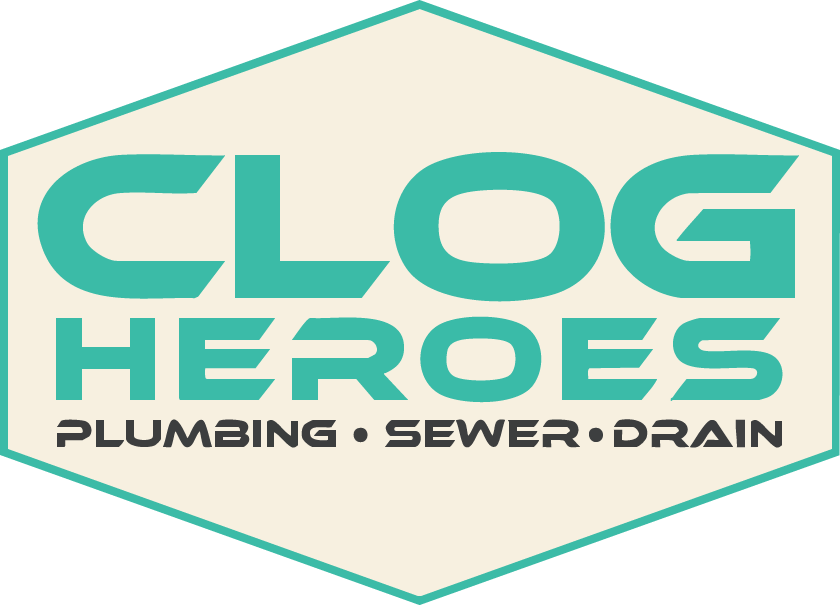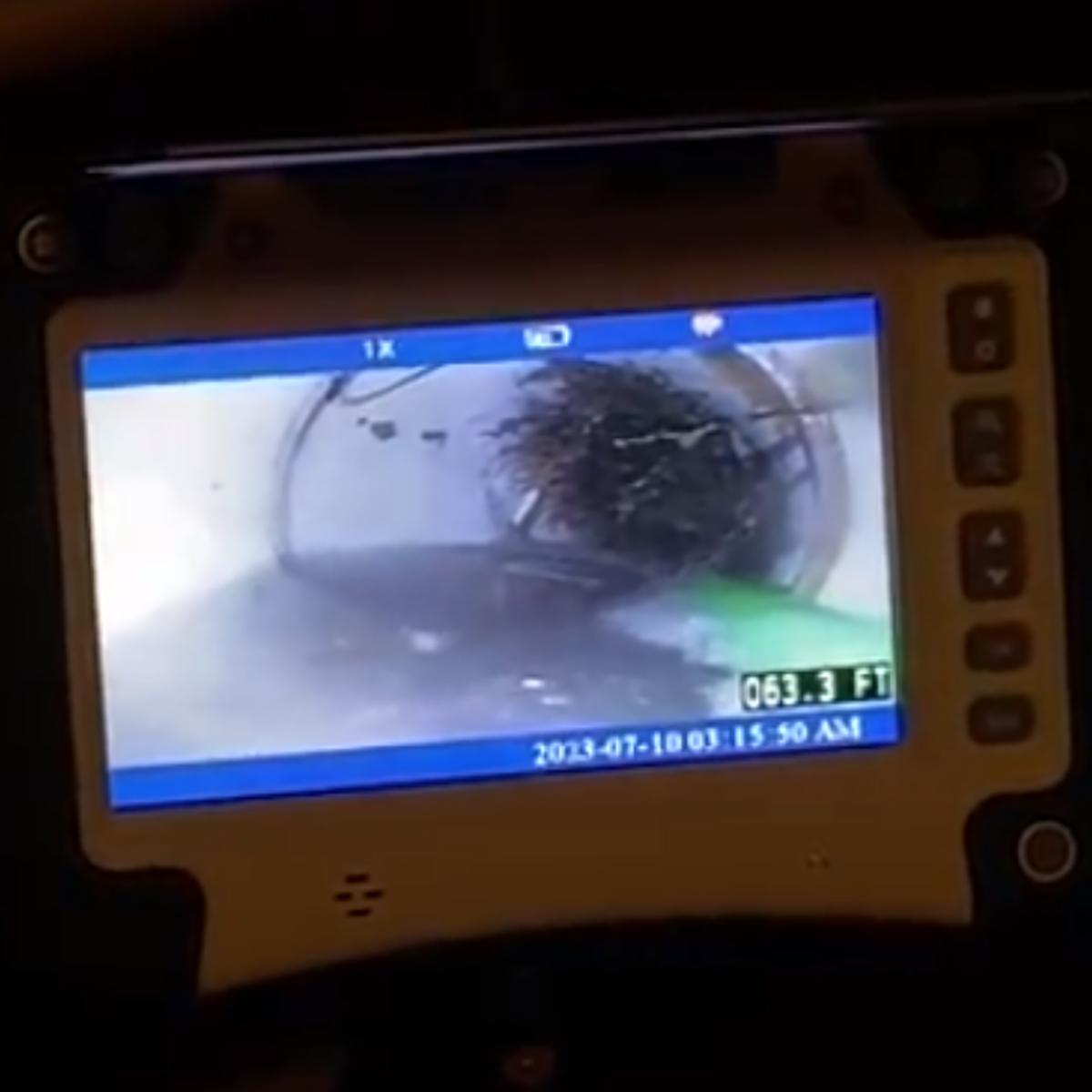Sewer Inspection: What It Is and Why Your Home Needs One
Home /
As someone who works in plumbing every day, I can tell you that few services prevent disaster as effectively as a sewer inspection. I’ve been called to homes where the sewer line was one flush away from backing up into the shower. A quick camera inspection can catch issues early, saving homeowners from the stress of messy, urgent repairs.
Let’s break down what a sewer inspection involves, why it matters, and how to know when it’s time to schedule one — so you can keep your home running smoothly year-round.
What Is a Sewer Inspection?
A sewer inspection — often called a sewer camera inspection — is a modern, non-invasive way to see exactly what’s going on inside your sewer line. Using a high-resolution, waterproof camera on a flexible cable, we feed the line through a cleanout or access point and watch the footage in real time.
This process allows us to locate cracks, root intrusion, buildup, bellies (low spots where water pools), and collapsed sections without guessing — and without digging up your yard. The entire inspection usually takes under an hour and doesn’t damage your pipes.
Why Sewer Inspection Matters
Most homeowners don’t think about their sewer line until something goes wrong. But like any other part of your home, sewer lines age and wear out. Tree roots can work their way into joints, grease and soap scum can build up over time, and older pipes can corrode or shift.
A routine sewer inspection allows us to catch these problems early. When we spot a developing blockage or a section of pipe that’s starting to sag, we can recommend solutions that prevent emergencies and help keep your household running normally. A well-maintained sewer line doesn’t just protect your home — it also protects your community. The EPA’s Wastewater Research program studies how aging infrastructure impacts water quality, underscoring why early sewer inspections are so important.
Signs You Might Need a Sewer Inspection
Knowing when to schedule a sewer inspection can prevent unpleasant surprises. These are some of the most common red flags we see in the field:
Multiple slow drains: If sinks, tubs, and showers are draining slowly at the same time, the issue may be in the main sewer line.
Gurgling toilets: Strange sounds after flushing can indicate trapped air from a partial blockage.
Sewer odors: Foul smells from drains or outside near your yard could mean a leak or clog.
Unexplained yard spots: Wet areas or lush patches of grass can signal sewage escaping underground.
Backups in low fixtures: When waste backs up into tubs or showers, it’s often a sign of a sewer line problem.
If you notice these signs, scheduling a sewer inspection right away can keep the problem from getting worse.
When to Schedule a Sewer Inspection
As Part of Routine Maintenance
Even if you haven’t noticed problems, scheduling a sewer inspection every couple of years is a smart move. Think of it like a check-up for your home’s plumbing system — it gives you peace of mind that everything is working properly. According to CDC’s National Wastewater Surveillance System, wastewater can carry indicators of community-wide health conditions, making monitoring crucial for public safety — which reinforces why regular sewer inspection is smart for protecting your home and neighborhood.
Before Buying or Selling a Home
If you’re house hunting, adding a sewer inspection to your pre-purchase checklist is one of the smartest moves you can make. Standard home inspections usually focus on visible plumbing but don’t include the main sewer line. Having the line inspected before closing ensures you won’t inherit hidden issues like cracks, roots, or blockages.
After Major Storms or Ground Shifts
Heavy rain, flooding, or nearby construction can shift the soil around your sewer line. If your home has experienced any of these, scheduling an inspection can ensure nothing has shifted or cracked underground.
What Happens During a Sewer Inspection
Many homeowners are surprised by how straightforward the process is. Here’s what to expect:
Setup: We locate your main cleanout or another access point.
Camera insertion: A flexible cable with a camera is fed into the sewer line.
Real-time viewing: We watch the video feed as the camera travels through the line.
Documentation: We record footage and mark problem areas for future reference.
Explanation: When we’re done, we walk you through the findings in plain language.
This process is clean, quick, and doesn’t damage your pipes. You’ll clearly see the condition of your sewer system, and we’ll give you a straightforward plan for any needed repairs or cleaning.
After the Sewer Inspection
Once the inspection is complete, we’ll review the footage with you and explain any issues we found. Sometimes the solution is as simple as a drain cleaning to remove buildup and restore flow. In other cases, we may recommend sewer line maintenance or pipe services to keep your system running smoothly.
FAQs About Sewer Inspection
How long does a sewer inspection take?
Most inspections take less than an hour, depending on the length of your line and the complexity of the issue.
Will it work if the line is clogged?
Yes — if the line is partially blocked, the camera can still pass through. If it’s fully blocked, we may recommend clearing the blockage first.
Is it messy?
Not at all. The process is clean and non-invasive.
How often should I have one done?
Every two to three years is a good rule of thumb, or sooner if you notice warning signs.
Contact Clog Heroes Today
Don’t wait for a sewer backup to disrupt your home. Contact Clog Heroes Plumbing, Sewer & Drain today to schedule your professional sewer inspection. Our team uses advanced camera technology to give you clear answers and practical solutions for your plumbing system.
We proudly serve homeowners in Fredericksburg, VA, and nearby communities, helping keep local sewer lines clear and homes running smoothly year-round.
Final Thoughts
A sewer inspection is one of the smartest ways to stay ahead of plumbing problems. It’s fast, non-invasive, and gives you peace of mind about what’s happening underground. Whether you’re buying a home, dealing with slow drains, or just want to avoid emergencies, scheduling an inspection is a simple step toward keeping your home safe and functional.

